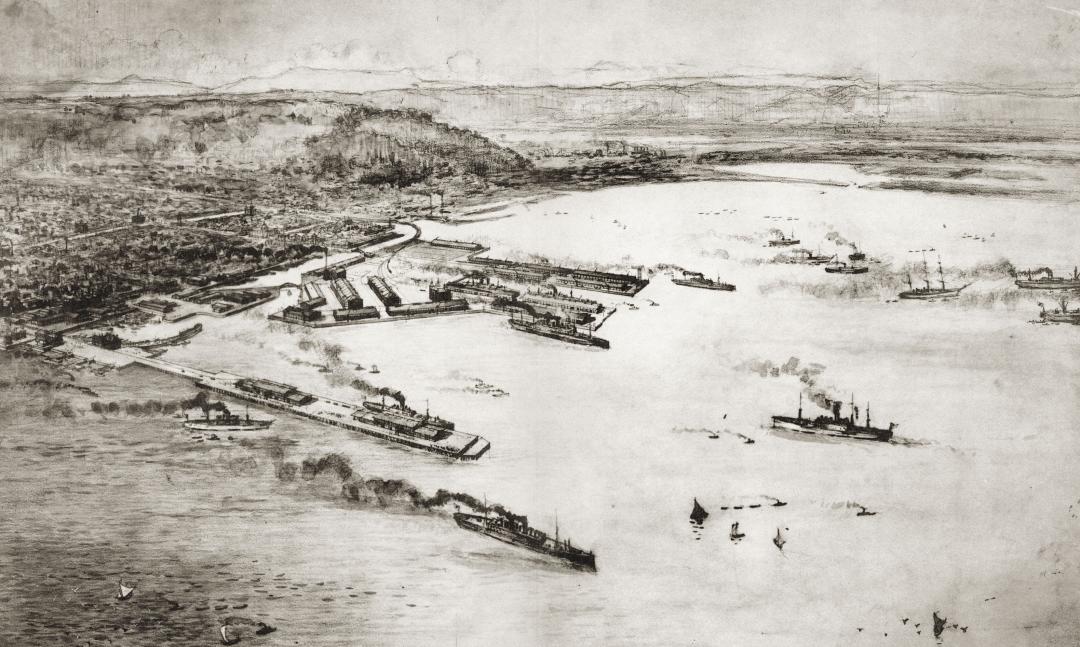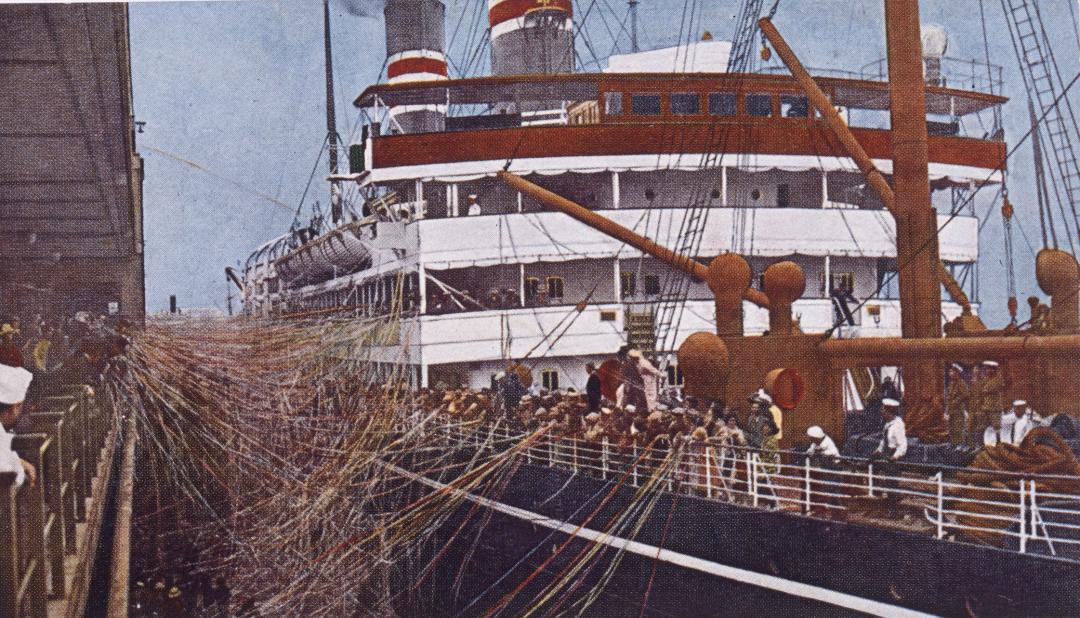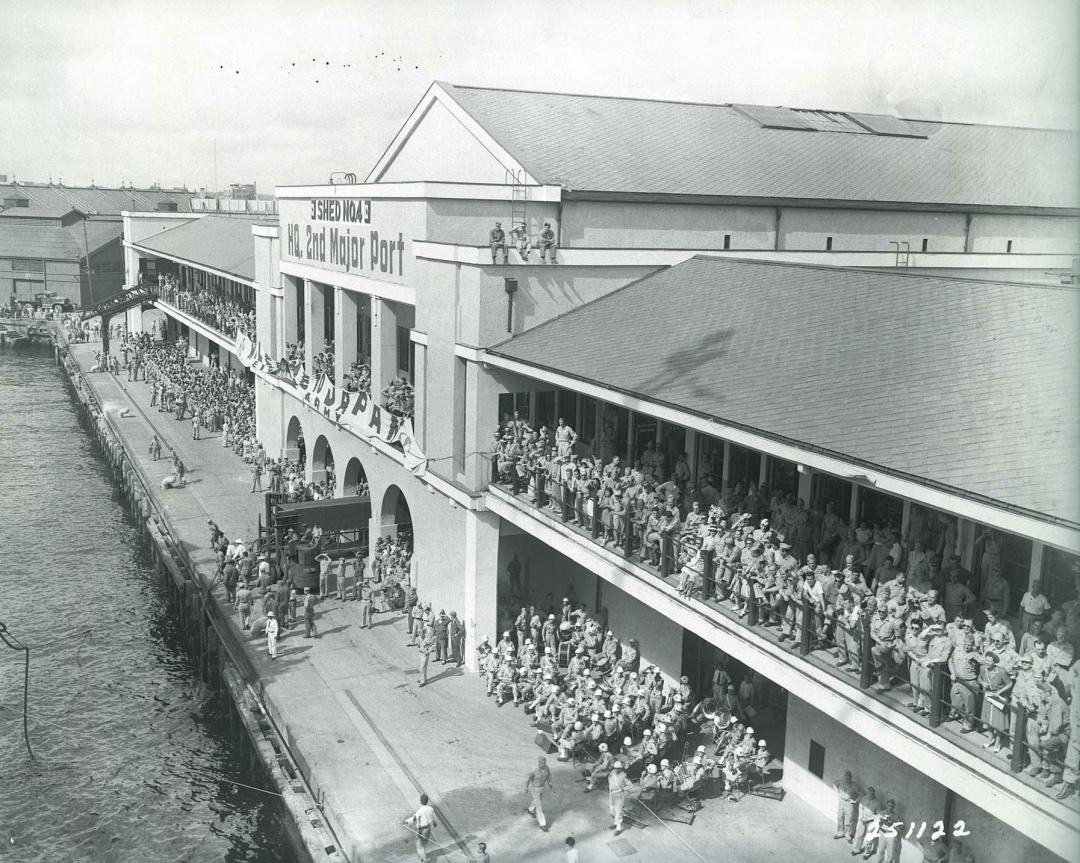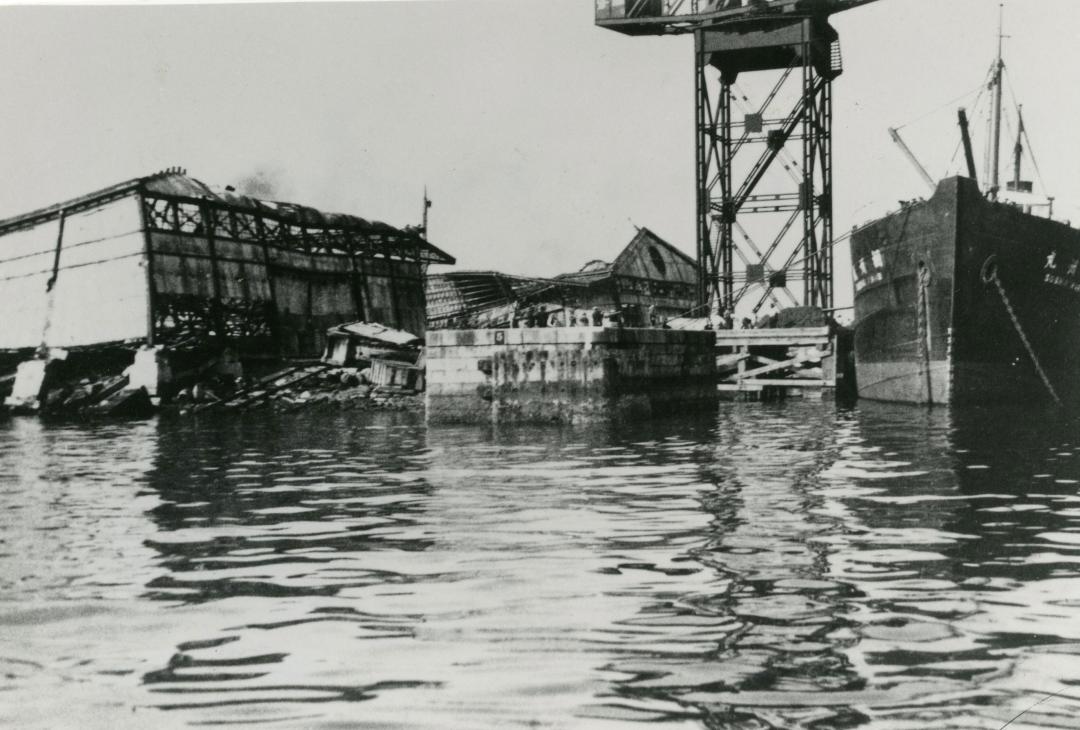Want to know more? Dig a little deeper by reading the information below.
Shinkō Pier and the Hammerhead
Shinkō Pier
Alongside its many parks, museums, and fashionable commercial centers, this bustling waterfront district preserves several of Yokohama’s most historic and iconic port structures. The Red Brick Warehouses, rail lines from the old steam train, and this giant cantilever (“hammerhead”) crane are part the complex story of Shinkō Pier, which for many decades was the heart of Yokohama Port.
Roughly 40 years after the port’s opening in 1859, international trade had reached a fever pitch. Goods were arriving faster than the existing pier could unload them or Yokohama Customs House could assess them. The chronic deficiency of pier facilities was causing a bottleneck in distribution and hampering commerce. Yokohama clearly needed a new pier, with moorage for additional ships, bigger warehouses to store goods awaiting inspection, and better railway access for ease of distribution.
To meet these needs, work on Shinkō Pier began in 1899 and was completed in 1914. Large areas of the harbor were filled in to create new land for the rail lines, wharfs, 14 storage sheds, two massive Red Brick Warehouses, 19 cranes, and an electrical power plant that formed a state-of-the-art pier. Its wharfs could accommodate 13 large passenger-cargo ships. When construction concluded, Shinkō Pier was the new heart of one of the finest ports in Asia.

Conceptual aerial view of Shinkō Pier (1917)
(Image courtesy of Yokohama Port Museum)
During the 1930s, Shinkō Pier also became a major gateway for international travel, and stars like Douglas Fairbanks and Babe Ruth disembarked here.

An ocean liner departs from Shinkō Pier (1930)
(Image courtesy of Yokohama Port Museum)
After World War II, the pier was requisitioned as a headquarters for the Allied armed forces, who renamed it “Center Pier” and restricted its use to the military—effectively stifling its function in trade. Control of most of Shinkō Pier was returned to Japan in 1956, but a post-war trade boom created an overwhelming volume of ships and goods entering the port, necessitating the construction of other piers. Gradually, the focus of trade shifted toward these newer facilities. The advent of container shipping in the 1970s further threatened Shinkō Pier’s relevance, since the bay around the pier was not deep enough for massive container ships to dock.

Yokohama's 2nd Major Port under operation by the Eighth United States Army during their occupation of Yokohama (1946)
(Image courtesy of the City of Yokohama Municipal Archives via the U.S. National Archives and Records Administration )
In 1983, a plan to renovate the harbor area was launched. Called “Minato Mirai 21,” it included a transformation of the largely disused pier into the new Shinkō District, where an emphasis on historical preservation and a relaxing landscape would balance the ultra-modern aesthetic of the neighboring Central District.
The Hammerhead
Like the Red Brick Warehouses, this giant cantilever crane is a symbol of the complex history and enduring character of Shinkō Pier. Built by English manufacturer Cowans Sheldon and Company, Ltd., it was installed on Shinkō Pier in 1914. This fixed-position crane, called a “hammerhead” for its resemblance to the head of a hammer, is designed to lift loads as heavy as 50 metric tons, although tests proved it capable of lifting as many as 65.
At the time it was installed, the Hammerhead was one of five such cranes in Japan, but the other four were located in military shipyards or manufactories where they were needed to lift ships’ cannon, boilers, or massive loads of steel bars. In contrast, most of the goods traveling through Shinkō Pier were relatively light—cotton, wool, raw silk, and silk fabrics—so it is unlikely that a 50-ton crane was strictly necessary. Shinkō Pier builders, however, took pride in the construction of a world-class harbor able to handle any eventuality, and they saw the Hammerhead as a symbol of the port’s future.
The crane’s base was installed on the seabed using a pneumatic caisson, an anchoring technique that is particularly well suited to soft or waterlogged ground. This firm foundation allowed the Hammerhead to survive the Great Kanto Earthquake in 1923, which destroyed nearly everything else on Shinkō Pier.

The Hammerhead, which survived the Great Kanto Earthquake that collapsed Shinkō Pier (1923)
(Image courtesy of Yokohama Port Museum)
 Find and scan all the QRT codes!
Find and scan all the QRT codes!
(7different codes across 12 locations)

 A History of Yokohama Port
A History of Yokohama Port
 Zou-no-hana: The Birthplace of Yokohama Port
Zou-no-hana: The Birthplace of Yokohama Port

 Red Brick Warehouses: A Symbol of the Evolving Port
Red Brick Warehouses: A Symbol of the Evolving Port
 Shinkō Pier and the Hammerhead
Shinkō Pier and the Hammerhead

 Kishamichi Promenade
Kishamichi Promenade
 A Designer Cityscape: The Minato Mirai 21 Project
A Designer Cityscape: The Minato Mirai 21 Project
 The Ship That Trained a Half-Century of Sailors
The Ship That Trained a Half-Century of Sailors

 A History of Yokohama Port
A History of Yokohama Port
Click here for more information on the Port History Guide and other tourist information.
Cruise Project Promotion Division, Port and Harbor Bureau, City of Yokohama
Tel:045-671-7272
